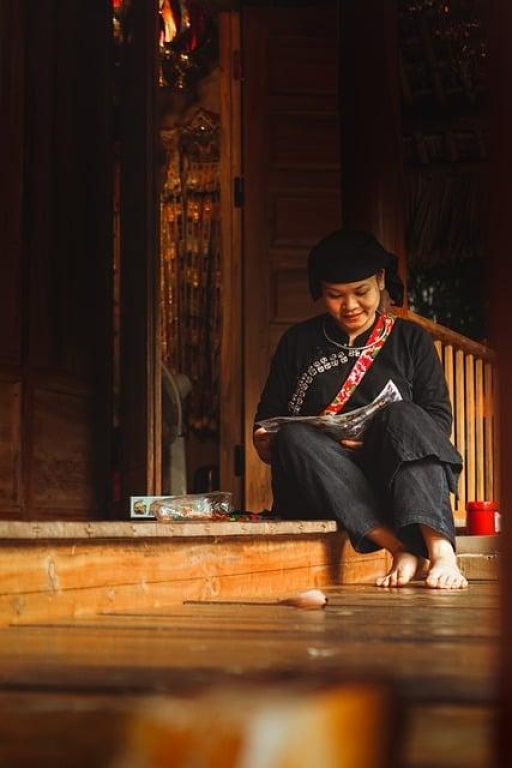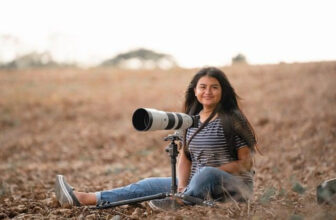Master the Art of Portrait Photography with These Tips
GoogleAds

Portrait photography is a timeless art form that allows photographers to capture the essence and personality of their subjects in a single frame. Whether you’re a beginner or a seasoned pro, perfecting the art of portrait photography requires a keen eye, technical skill, and a solid understanding of composition and lighting. In this article, we’ll explore some essential tips and techniques to help you elevate your portrait photography game and create stunning images that truly capture the soul of your subjects.
– Understanding the Fundamentals of Lighting in Portrait Photography
When it comes to portrait photography, lighting plays a crucial role in capturing stunning images that truly stand out. Understanding the fundamentals of lighting is essential for creating captivating portraits that highlight your subject’s best features.
First and foremost, it’s important to grasp the concept of light direction. The angle from which light hits your subject can dramatically affect the mood and overall feel of the portrait. Experiment with different angles to see how they impact the final image.
Another key aspect to consider is the quality of light. Soft, diffused light tends to produce flattering results by reducing harsh shadows and creating a smooth, even complexion. On the other hand, hard light can add drama and dimension to your portraits.
Furthermore, understanding the color temperature of light can greatly influence the tone of your photographs. Adjusting the white balance on your camera or using color gels can help you achieve the desired look and feel for your portraits.
Lastly, don’t be afraid to get creative with your lighting setups. Experiment with different lighting modifiers, such as umbrellas, softboxes, and reflectors, to achieve unique and dynamic portraits that showcase your subject in the best possible light.
– Utilizing Composition Techniques to Enhance Your Portraits
When it comes to taking captivating portraits, mastering composition techniques is essential. By carefully considering elements such as framing, leading lines, symmetry, and balance, you can enhance the visual impact of your photos and create stunning portraits that truly stand out.
One key composition technique to utilize in portrait photography is the rule of thirds. By dividing your frame into a 3×3 grid and placing your subject along the gridlines or at the intersection points, you can create a more dynamic and visually appealing composition. This technique helps draw the viewer’s eye to the subject and adds interest to the image.
Another effective composition technique to enhance your portraits is leading lines. These are lines within the frame that lead the viewer’s eye towards the main subject. Whether it’s a fence, a road, or a row of trees, incorporating leading lines can help create depth and guide the viewer’s gaze through the image.
Don’t overlook the importance of symmetry in portrait photography. Symmetrical compositions can create a sense of balance and harmony in your photos. Look for opportunities to frame your subject symmetrically, whether it’s through the use of reflections, architectural elements, or natural formations.
Lastly, remember to pay attention to the overall balance of your composition. Whether you’re using the rule of thirds, leading lines, or symmetry, keeping the visual weight of the elements in your frame balanced will help create a more visually pleasing portrait. Experiment with different compositions and techniques to see what works best for your style and subjects.

– Building Rapport and Connection with Your Subjects
When it comes to portrait photography, one of the most important aspects is building rapport and connection with your subjects. This is what sets apart a good portrait from a great one. Here are some tips to help you master the art of portrait photography:
- Get to Know Your Subjects: Take the time to chat with your subjects before the shoot. Ask them about their interests, hobbies, and what they are looking for in the photos. This will help you establish a connection and make them feel more comfortable in front of the camera.
- Pay Attention to Body Language: Be observant of your subject’s body language during the shoot. Are they relaxed or tense? Adjust your approach accordingly to make them feel at ease. Encourage natural poses and expressions to capture genuine emotions.
- Use Humor and Positivity: A lighthearted and positive attitude can go a long way in building rapport with your subjects. Crack a joke, compliment them, or simply smile to create a fun and relaxed atmosphere. This will help them feel more comfortable and confident during the shoot.
- Show Genuine Interest: Show genuine interest in your subjects and their stories. Ask them questions, listen attentively, and engage with them throughout the shoot. This will not only help you capture their essence but also make the experience more enjoyable for both of you.
- Give Praise and Encouragement: Don’t forget to praise your subjects during the shoot. Compliment them on their poses, expressions, or outfits to boost their confidence. Positive reinforcement can help them relax, have fun, and bring out their best selves in front of the camera.
| Tip: | Use natural light whenever possible for a soft and flattering look. |

- Selecting the Right Backgrounds for Portrait Photography
When it comes to portrait photography, selecting the right background can make all the difference in the final result. The background sets the tone and enhances the subject, making it an important element to consider in your composition. Here are some tips to help you master the art of portrait photography by choosing the perfect backgrounds:
- Consider the mood: Think about the emotion or story you want to convey in the portrait. A soft, blurred background can create a dreamy, romantic feel, while a bold, vibrant background can add energy and personality to the shot.
- Avoid clutter: Busy backgrounds can be distracting and take away from the main subject. Look for simple, unobtrusive backgrounds that complement the subject without overwhelming them.
- Use natural light: Outdoor settings can provide beautiful, natural light that enhances the portrait. Consider shooting during golden hour for warm, flattering light, or in shaded areas for soft, even lighting.
Tables are also a valuable tool for highlighting key information in your portrait photography settings. Here’s an example of how you can use a table to showcase different background options:
| Background | Mood |
|---|---|
| Cityscape | Urban, modern |
| Forest | Natural, serene |
| Beach | Relaxed, sunny |
Remember, the background should complement the subject and enhance the overall feel of the portrait. By following these tips and getting creative with your background choices, you can take your portrait photography to the next level and create stunning, memorable images.

– Choosing the Ideal Camera Settings for Portraiture
When it comes to capturing stunning portraits, having the right camera settings is crucial. By mastering the art of choosing the ideal camera settings for portraiture, you can take your portrait photography to the next level. Whether you’re a beginner or an experienced photographer, these tips will help you achieve professional-looking portraits every time.
1. Aperture: One of the most important camera settings for portraiture is the aperture. A wide aperture (low f-stop number) such as f/2.8 or lower will create a shallow depth of field, making the subject stand out against a blurred background. This is perfect for focusing attention on the person you’re photographing.
2. Shutter Speed: Another crucial camera setting for portraits is the shutter speed. A faster shutter speed will help freeze motion and prevent blurry images, especially when photographing moving subjects. On the other hand, a slower shutter speed can create a sense of motion or blur for artistic effect.
3. ISO: The ISO setting determines the camera’s sensitivity to light. For portraits taken in well-lit conditions, a lower ISO (such as 100 or 200) is ideal to reduce noise and maintain image quality. In low-light situations, you may need to increase the ISO to capture a properly exposed image, but be mindful of noise.
4. White Balance: Paying attention to white balance is essential for achieving accurate colors in your portraits. Adjust the white balance setting based on the lighting conditions – for example, use the daylight setting for outdoor portraits or the tungsten setting for indoor portraits under artificial lighting. You can also experiment with custom white balance settings for creative effects.

– Directing and Posing Your Subjects Effectively
Directing and Posing Your Subjects Effectively
When it comes to portrait photography, directing and posing your subjects effectively is key to capturing a stunning image. Here are some tips to help you master this art:
Establish a Connection: Before you even start snapping photos, take the time to connect with your subject. This will help them feel more comfortable and natural in front of the camera, leading to more authentic and impactful portraits.
Provide Clear Instructions: Make sure to give clear and concise instructions to your subject to help them understand how you want them to pose. Use simple language and demonstrate the pose if necessary.
Encourage Movement: Don’t be afraid to encourage your subject to move around during the shoot. Movement can add dynamism and energy to your portraits, making them more visually interesting.
Pay Attention to Body Language: Keep an eye on your subject’s body language throughout the shoot. Make adjustments as needed to ensure they look relaxed and confident in front of the camera.

– Utilizing Post-Processing Techniques for a Polished Finish
Portrait photography is a beautiful art form that captures the essence of a person through a lens. To truly master this craft, it is essential to utilize post-processing techniques that will enhance your images and give them a polished finish. By incorporating these tips into your workflow, you can take your portrait photography to the next level.
One of the key post-processing techniques to master is color correction. Adjusting the colors in your portrait can make a huge difference in the overall look and feel of the image. Use tools like Adobe Lightroom or Photoshop to fine-tune the colors, saturation, and white balance to create a vibrant and harmonious color palette in your portraits.
Another important aspect of post-processing is retouching. Whether you are removing blemishes, wrinkles, or stray hairs, retouching can help enhance the overall appearance of your subject. Be sure to use a light hand when retouching to maintain a natural look and avoid over-editing your portraits.
In addition to color correction and retouching, mastering the art of portrait photography also involves enhancing the lighting in your images. Utilize tools like dodge and burn to lighten and darken specific areas of the portrait, creating depth and dimension. Experiment with different lighting techniques to see what works best for each individual portrait.
Furthermore, consider adding creative effects to your portraits to make them stand out. From black and white conversions to adding textures or filters, there are endless possibilities to enhance the mood and style of your portraits. Play around with different effects to see what complements your subject and conveys the emotion you want to evoke in your images.
By incorporating these post-processing techniques into your portrait photography workflow, you can elevate your images from good to great. With practice and experimentation, you can master the art of portrait photography and create stunning, polished portraits that truly capture the essence of your subject.
Q&A
Q: What are some key tips for mastering the art of portrait photography?
A: Some key tips include understanding lighting, using a variety of angles, connecting with your subject, and composing the shot effectively.
Q: How important is lighting in portrait photography?
A: Lighting is crucial in portrait photography as it can enhance the overall look and feel of the photo. Natural light is often the best option, but artificial lighting can also be used effectively.
Q: How can photographers establish a connection with their subjects?
A: Photographers can establish a connection with their subjects by engaging in conversation, providing direction and feedback, and creating a comfortable and relaxed atmosphere during the shoot.
Q: What are some techniques for composing a portrait effectively?
A: Some techniques for composing a portrait effectively include using the rule of thirds, paying attention to the background, experimenting with different focal lengths, and adjusting the framing of the shot.
Q: What equipment is essential for portrait photography?
A: Essential equipment for portrait photography includes a high-quality camera, a variety of lenses (such as a portrait lens), a tripod, and possibly lighting equipment for controlled lighting conditions.
The Way Forward
In conclusion, mastering the art of portrait photography takes time, practice, and dedication. By following these tips and techniques, you can elevate your photography skills and capture stunning portraits that truly showcase the beauty and personality of your subjects. Remember to experiment, take risks, and most importantly, keep honing your craft. With patience and perseverance, you can become a master portrait photographer. So grab your camera, head out into the world, and start capturing unforgettable moments today.
GoogleAds







